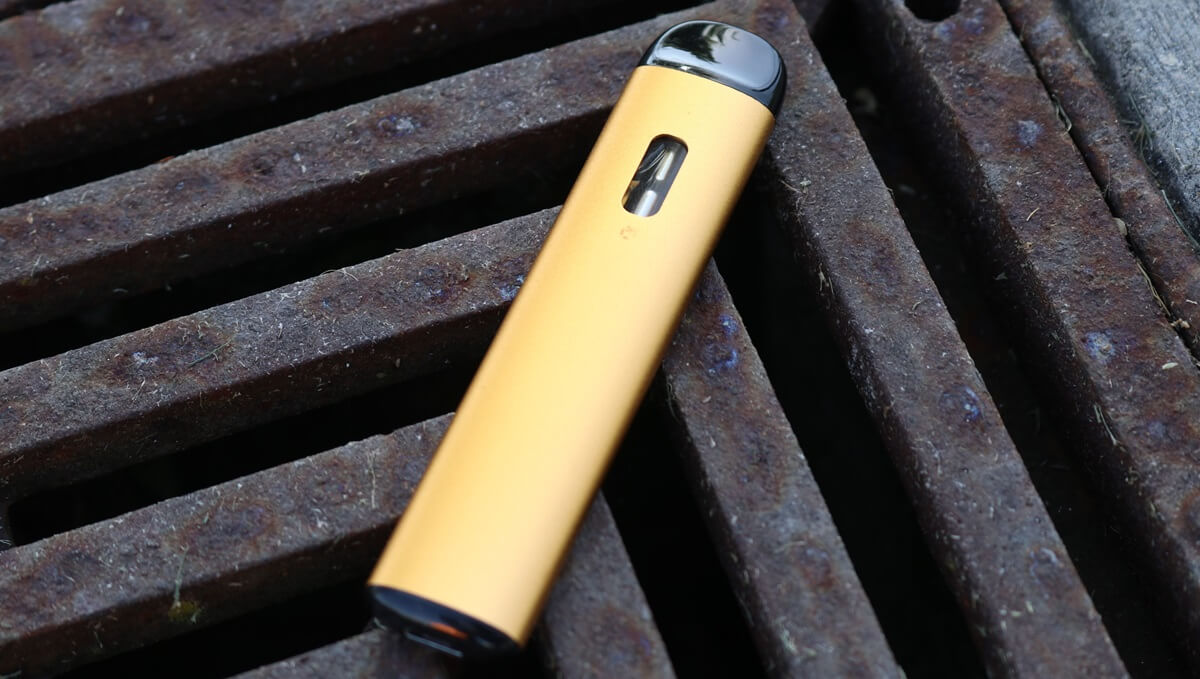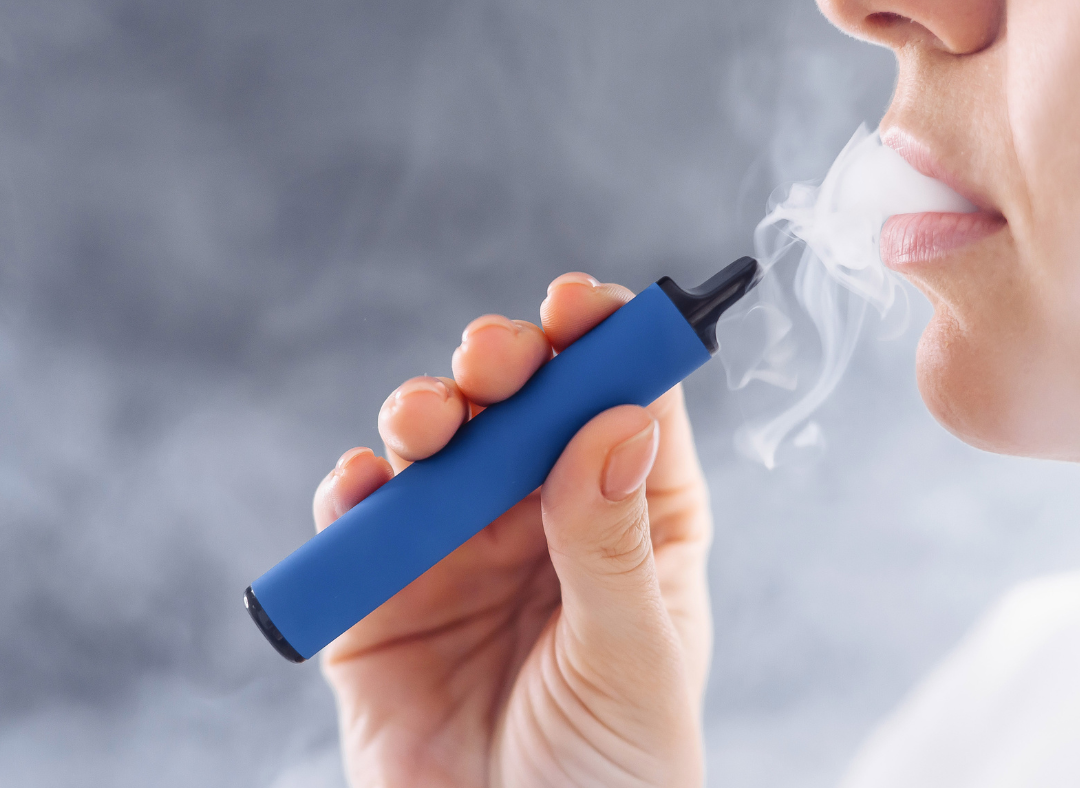Are nicotine and tobacco the same thing?
Tobacco is the common name for the herb Nicotiana tabacum. The tobacco plant makes the poisonous chemical nicotine as a natural defence mechanism to stop insects from eating it. Nicotine also exhibits dose-dependent effects on humans and other animals.
Tobacco has been used in the early Americas for many centuries and was introduced into Europe around 500 years ago. Tobacco quickly became a lucrative commodity to support the increasingly popular habit of smoking. Following the industrial revolution, cigarettes became hugely popular worldwide.
It wasn’t until the second half of the 20th century that the potentially devastating health consequences of smoking tobacco were proven. Tobacco kills approximately half of its users, with smoking responsible for 8 million deaths each year – approximately double the amount of people that have so far died as a result of the devastating COVID19 pandemic worldwide.
What are the effects of nicotine?
The effects of nicotine on the user are dependent on how nicotine is ingested, and whether or not the user is addicted to nicotine.
Similar to drugs like heroin and cocaine, nicotine acts on the brain’s reward pathway. Once nicotine is absorbed and transported in the blood to the brain, it attaches to the tiny nicotine receptors, which release dopamine typically producing a pleasurable feeling. Unfortunately, with increased nicotine use, the brain creates more receptors for the nicotine molecules to attach to, which increases cravings for nicotine. This can quickly result in a user becoming addicted to nicotine, experiencing feelings of displeasure, agitation, or anxiety when their increased number of nicotine receptors are unfilled and dopamine levels drop. Different people are more prone to becoming addicted to nicotine and other drugs, due to genetic, environmental, and social factors. People who suffer from mental health conditions are also more prone to becoming addicted to nicotine.
While nicotine is extremely addictive, as a stand-alone drug it is relatively harmless, and is non-carcinogenic – it is the other chemicals in smoke that cause cancer. Nicotine does increase blood pressure and heart rate slightly, similar to caffeine, however whether nicotine alone causes any significant risk on the cardiovascular system is debatable and worth noting that it should be limited for anyone with any history of heart disease.
For a non-smoker, ingesting nicotine via smoking can cause an enjoyable light-headed feeling or buzz, while the inhalation of smoke may be unpleasant, causing coughing, or making the user feel nauseous or dizzy. Everyone responds differently to smoking initially, some people find it absolutely revolting, others find it enjoyable quite quickly. It is believed that users who initially are more sensitive to nicotine are more likely to get hooked, however, anyone can potentially become addicted to nicotine.
Addicted smokers typically are used to inhaling smoke, and don’t typically cough, or feel nauseous when they inhale smoke like non-smokers do. When a smoker inhales, they almost immediately feel a calming sensation or a feeling of increased focus. This creates a vicious cycle, where the smoker craves this feeling, and feels less calm or focused the longer they go without a cigarette.
Ingesting nicotine via smokeless alternatives causes different effects depending on how quickly the nicotine is addicted. For example, a nicotine patch delivers nicotine gradually throughout the day, which satisfies a smoker’s craving, but does not give the ‘hit’ or ‘buzz’ that smokers are often also addicted to. Nicotine gum releases nicotine more quickly, although not as quickly as smoking, but this quicker release can be effective in fulfilling, at least in part, the quick hit that smoker’s often miss.
E-cigarettes or vapes deliver nicotine most closely to smoking and is likely why recent studies suggest they may be more effective in helping smokers quit. This is good news for smokers who haven’t found success with nicotine gum or patches, meaning they can potentially use a safer alternative that closely mimics the nicotine delivery of smoking, without being exposed to the hundreds or toxic chemicals that are also absorbed when smoking. Delivering nicotine so similarly to smoking, without the dangerous smoke also has the downside though of potentially appealing more to non-smokers. As discussed above, the inhalation of smoke for a non-smoker can be very unpleasant and puts a lot of people off smoking. Removing this barrier may mean that younger, non-smokers are more tempted to take up vaping than they would be smoking, which has unfortunately been the case, particularly in the USA. This is in part why many countries have limited flavours that could potentially appeal to young people, or never-smokers. This is also, in part, Australia has implemented laws that limit nicotine vaping’s availability to smokers who have otherwise been unable to quit via the prescription model.
Smoking tobacco versus nicotine gum, patches and vaping e-cigarettes. What are the pros and cons?
There are multiple ways to consume nicotine, however smoking tobacco, in the form of cigarettes, remains the most popular, despite the potentially deadly consequences. Smoking tobacco remains the leading cause of preventable death worldwide. Smoking also appears to be the most addictive way to consume nicotine.
Cigarette Smoking
Cigarettes are made from dried tobacco leaves and stems, with chemical additives. Smoking cigarettes allows the nicotine from the tobacco to be absorbed through the lungs and almost immediately into a smoker’s blood. Nicotine-containing blood reaches the brain within a few pumps of the heart, producing the mental effects that social smokers are seeking, and satisfying nicotine craving in addicts. Unfortunately, as cigarettes burn tobacco, it isn’t just nicotine that is absorbed by the lungs. Thousands of harmful chemicals are created or released when cigarettes are smoked, which are then also drawn into the lungs. Half of all smokers who do not quit will die of a smoking-related disease. Smoke exhaled from smoking is also harmful to those surrounding. Second-hand smoke or ‘passive smoking is estimated to kill over 1 million people each year.
Cigars and Pipes
Cigars and pipes are more traditional ways of smoking that aren’t as popular as they once were. Most cigar or pipe smokers do not inhale the smoke deeply into the lungs, only drawing the smoke into the mouth. This method causes less damage than cigarette smoking, although it still causes significant harm. If cigar or pipe smoke is inhaled fully into the lungs, the serious risks are likely on par with cigarette smoking.
Hookah pipes (shisha)
A hookah is a pipe where smoke is drawn through a bottle of water. The tobacco or ‘shisha’ is typically flavoured and sweetened. Believed to have originated in India, hookah smoking is not as popular in Australia as it is in other countries, particularly in Asia and the Middle East. People who smoke hookah often suffer from similar smoking-related diseases, and there is no reliable evidence that it is a safer alternative to smoking cigarettes.
Smoke-free nicotine-containing products
Some forms of tobacco products are not smoked, which prevents some, but not all of the harms of smoking. They typically reduce or eliminate the risk of harm to those surrounding the user, whereas smoking can significantly harm, or even kill others. Chewing tobacco and snus are products that release nicotine into the mouth. The nicotine hit is achieved with fewer cancer-causing chemicals damaging the lungs. Snuff is a powdered tobacco product that is popular in some Scandanavian countries and inhaled up the nose. Snorting snuff increases the cancer risk for the places it contacts, the nose, mouth, and throat, however, the overall level of risk of harm and death is also lower than with smoking cigarettes. The majority of these products are illegal to sell in Australia.
The use of electronic cigarettes or vapes is growing, particularly overseas. These typically do not contain tobacco, delivering a puff of vaporised liquid containing nicotine, which mimics the sensation of smoking without delivering the harmful smoke. Vapes have not been researched conclusively, however early research suggests that they are much less harmful than actual cigarettes because they do not produce the range of damaging chemicals found in tobacco smoke. While they are likely significantly safer than smoking cigarettes, they aren’t risk free, and should only be used as a short term solution to reduce nicotine intake for smokers who have otherwise been unable to quit. There is ongoing debate about the role vaping might have to reduce the public health burden smoking cigarettes have, how effective they are in helping smokers quit, and how safe they are long term.
Nicotine Gum and Patches
Absorbing nicotine via gum or patches is the safest way for the body to absorb nicotine. Nicotine replacement therapy (NRT) has been recommended by doctor’s to smokers for decades, as has been proven to be a safe and effective way to help smokers quit. Arguably the main downside of traditional NRT is that nicotine is absorbed more slowly than smoking cigarettes, and doesn’t closely mimic the nicotine ‘hit’ or the ritual that many smokers crave and may also be addicted too. Nicotine patches release nicotine most slowly, whereas nicotine gum releases it faster, however not as fast as smoking or vaping.
Are E-cigarettes/vapes as dangerous as traditional cigarettes?
Although this question remains the subject of debate, increasingly the evidence points to e-cigarettes/vaping being significantly safer than traditional cigarettes, so long as the product use is produced to high safety standards and free of contaminants. Research is ongoing, however recent studies that are worth noting include:
- The UK charity Drug Science was the first internationally recognised scientific body to meaningfully examine the relative risks of vaping versus smoking. Using multi criteria decision making [MCDA], an international expert group concluded that vaping was overall about 25 times less harmful than smoking cigarettes. This finding formed the basis of Public Health England endorsing vaping as a viable tobacco harm reduction strategy, and also informed the New Zealand government’s tobacco harm reduction policy.
- In 2019 an Australian expert group compared twenty drugs and concluded that vaping was less than a tenth as harmful as smoking.
While the current evidence suggests that vaping is significantly safer than smoking, it is a relatively new technology, and the long-term risks remain unclear. It is worth reflecting that there aren’t many things that are riskier than smoking, including many illicit drugs. Just because vaping is safer than smoking, doesn’t mean it is safe.
Ultimately the safest option is to quit vaping and smoking altogether and to use vaping only as a short-term alternative to wean nicotine use. If you need assistance, speak with your GP, or the team at Quit Clinics are happy to help.






